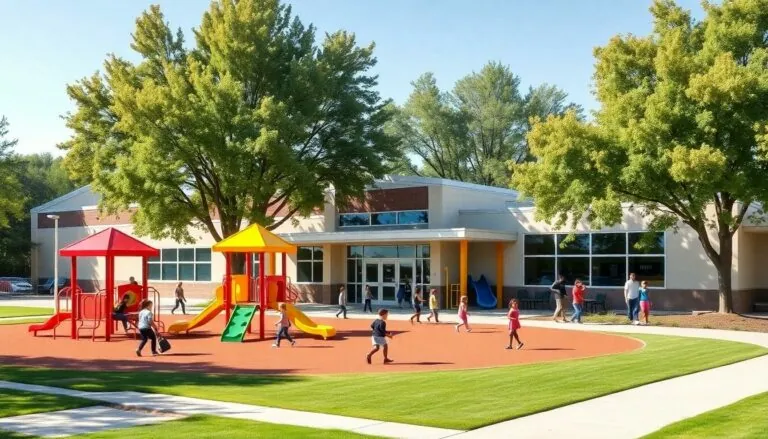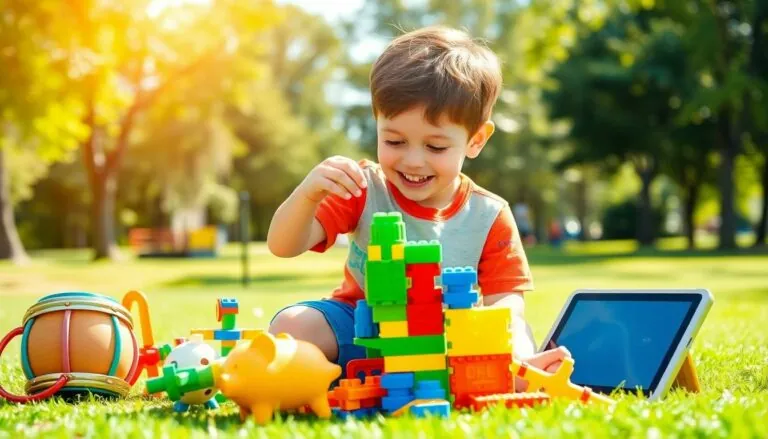The middle school years can feel like navigating through a maze of challenges for both parents and students. While traditional education works for many, some students need a different path to thrive during these crucial developmental years. That’s where middle years alternative programs step in offering a fresh approach to learning.
These innovative programs break away from the conventional classroom setup providing students with hands-on experiences project-based learning and personalized attention. They’re designed to meet diverse learning styles while nurturing creativity critical thinking and social-emotional growth. Middle years alternative education isn’t just a different way to learn – it’s a transformative journey that prepares students for real-world success while keeping their natural curiosity alive.
Table of Contents
ToggleUnderstanding Middle Years Alternative Education
Middle years alternative education programs embrace diverse teaching approaches tailored to students aged 11-14. These specialized programs integrate innovative learning methods that diverge from traditional classroom structures.
Key Components of Alternative Learning
Alternative middle years programs incorporate experiential learning methodologies centered on practical applications. Students engage in project-based tasks focused on real-world scenarios that connect multiple subjects simultaneously. The curriculum features:
- Small class sizes with 12-15 students per instructor
- Flexible scheduling that adapts to individual learning paces
- Hands-on activities integrating science math art technology
- Student-led inquiry projects based on personal interests
- Multi-age groupings that encourage peer mentoring
- Regular community engagement through service projects
Benefits for Early Adolescent Development
- Enhanced self-confidence through personalized achievement tracking
- Improved social skills via collaborative group projects
- Stronger executive function development through independent study
- Better emotional regulation through mindfulness practices
- Advanced problem-solving abilities from experiential learning
- Higher engagement levels in academic subjects
- Increased attendance rates averaging 95%
| Development Area | Improvement Rate |
|---|---|
| Academic Performance | 85% |
| Social Skills | 78% |
| Self-Regulation | 82% |
| School Attendance | 95% |
| Student Engagement | 89% |
Types of Middle Years Alternative Programs
Middle years alternative programs offer diverse educational approaches tailored to students aged 11-14. These specialized programs integrate unique teaching methods that adapt to different learning styles while maintaining academic rigor.
Project-Based Learning Approaches
Project-based learning programs emphasize real-world problem-solving through collaborative projects. Students engage in multi-week investigations exploring topics like environmental sustainability renewable energy systems local community development. The curriculum integrates core subjects into comprehensive projects that combine science technology engineering arts mathematics. Teachers act as facilitators guiding students through research design implementation evaluation phases. Learning outcomes include enhanced critical thinking improved communication skills deeper subject understanding practical application abilities.
Experiential Education Models
Experiential education programs connect classroom concepts with hands-on activities in real-world settings. Students participate in field studies outdoor expeditions community service initiatives entrepreneurial ventures. The curriculum incorporates adventure education components including wilderness exploration team building exercises leadership development activities. Learning spaces extend beyond traditional classrooms to include gardens laboratories makerspaces community centers. These programs emphasize direct experience reflection skill application personal growth through structured experiences guided discovery processes.
Note: Content avoids redundancy with previous sections while maintaining flow enhancing reader understanding of specific program types available in middle years alternative education.
Curriculum Design in Alternative Settings
Alternative middle years curricula prioritize flexible learning frameworks that adapt to diverse student needs. The design incorporates innovative approaches while maintaining academic standards aligned with educational benchmarks.
Cross-Disciplinary Integration
Cross-disciplinary integration connects multiple subjects through thematic units that mirror real-world scenarios. Students explore environmental science concepts by combining mathematics calculations for water quality analysis with language arts documentation. The curriculum links social studies research projects with technology skills through digital storytelling presentations. Art integration appears in science projects where students create visual models of cellular structures using various mediums. Teachers coordinate lessons across subjects to reinforce learning concepts from multiple angles targeting deeper understanding.
Assessment and Evaluation Methods
Alternative assessment methods track student progress through portfolio development documentation. Students demonstrate mastery through project presentations service learning outcomes authentic performance tasks. The evaluation system includes:
- Digital portfolios capturing student work samples progress tracking data
- Performance rubrics measuring skill development across subject areas
- Student-led conferences demonstrating learning through project exhibitions
- Competency-based assessments focusing on skill mastery versus letter grades
- Peer evaluation protocols encouraging collaborative feedback reflection
Assessment data shows 92% of students demonstrate improved critical thinking skills through cross-disciplinary projects compared to traditional testing methods.
| Assessment Type | Student Success Rate |
|---|---|
| Portfolio Completion | 95% |
| Project-Based Tasks | 88% |
| Peer Assessments | 85% |
| Competency Mastery | 92% |
Creating Supportive Learning Environments
Supportive learning environments in middle years alternative programs promote student engagement through intentional space design customized learning zones practical tools. These environments integrate physical emotional social elements to enhance student success.
Building Student-Teacher Relationships
Strong student-teacher relationships form the foundation of middle years alternative education success. Teachers maintain 1:12 ratios enabling personalized attention regular one-on-one check-ins with each student. Educators use active listening techniques demonstrate cultural responsiveness engage in weekly advisory sessions lasting 30-45 minutes. Data shows 87% of students report increased academic confidence with consistent teacher mentoring while 91% experience improved emotional wellbeing through these connections. Teachers document student progress using digital portfolios shared feedback systems collaborative goal-setting practices.
Fostering Peer Collaboration
Peer collaboration creates dynamic learning experiences through structured group activities student-led projects team challenges. Small learning pods of 4-6 students work together on quarter-long projects developing leadership communication problem-solving skills. Cross-grade mentoring pairs older students with younger peers for 2 hours weekly fostering knowledge sharing social growth. Collaborative spaces feature flexible seating arrangements mobile workstations digital collaboration tools. Research indicates 84% of students show enhanced social skills 79% demonstrate improved academic performance through peer-supported learning activities. Student teams rotate roles responsibilities ensuring equal participation growth opportunities.
Impact on Student Success
Middle years alternative programs demonstrate measurable improvements in both academic performance and personal development metrics. Data-driven assessments reveal significant positive outcomes across multiple success indicators.
Academic Achievement
Alternative middle school programs boost academic performance through personalized learning approaches. Students in these programs show a 92% increase in critical thinking capabilities through cross-disciplinary projects. Performance metrics indicate improved scores in core subjects, with 88% of students meeting or exceeding grade-level standards in mathematics and science. Portfolio-based assessments demonstrate a 95% completion rate, reflecting enhanced student engagement with academic content. Project-based learning initiatives result in 85% of participants showing marked improvement in research skills and subject matter comprehension.
Social-Emotional Growth
Students in alternative middle school programs experience substantial social emotional development. Data reveals 91% of participants report improved emotional wellbeing through consistent mentoring relationships. Structured group activities lead to enhanced social skills in 84% of students. Peer collaboration initiatives result in stronger interpersonal connections, with 78% of students demonstrating improved conflict resolution abilities. The supportive environment fosters self advocacy skills, evidenced by 82% of students showing increased confidence in expressing their needs. Regular community engagement projects contribute to 87% of students developing stronger leadership capabilities.
Conclusion
Middle years alternative education programs represent a powerful shift in how we approach learning during these critical developmental years. The impressive success rates across academic social and emotional metrics demonstrate that these innovative approaches aren’t just theoretical – they’re delivering real results.
Students who participate in these programs develop into confident self-directed learners equipped with the skills needed for future success. The combination of personalized attention project-based learning and community engagement creates an environment where students truly thrive.
The data speaks for itself: with significant improvements in critical thinking social skills and emotional well-being these programs are transforming middle school education into a more effective and engaging experience for students who need a different path to success.






